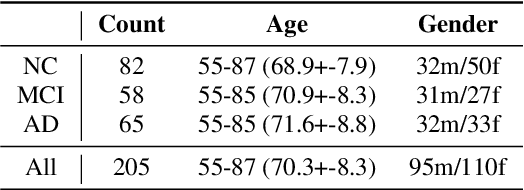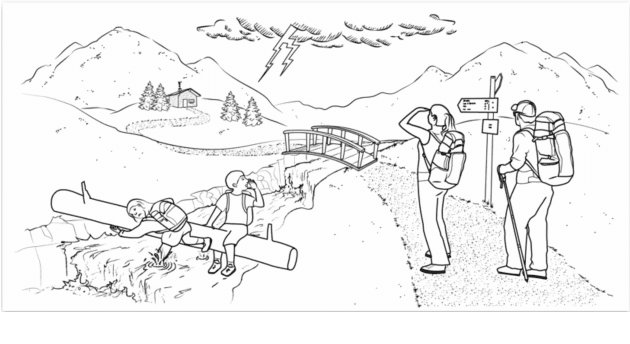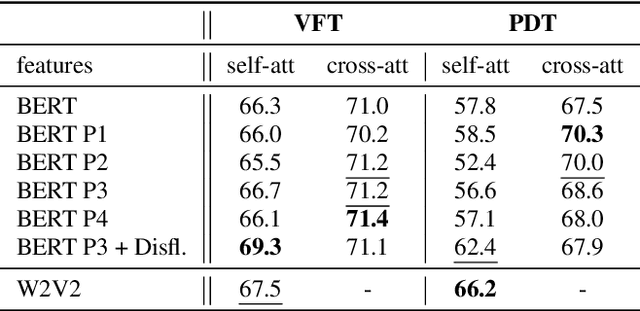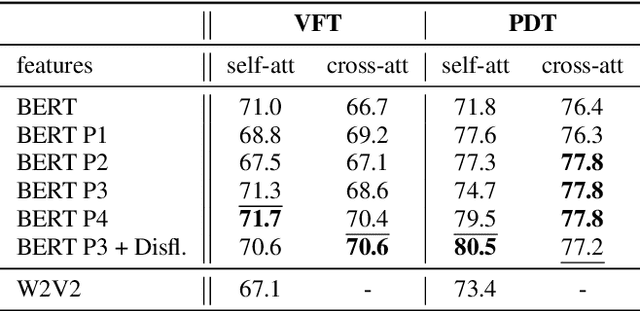Tobias Bocklet
Personalized Fine-Tuning with Controllable Synthetic Speech from LLM-Generated Transcripts for Dysarthric Speech Recognition
May 19, 2025Abstract:In this work, we present our submission to the Speech Accessibility Project challenge for dysarthric speech recognition. We integrate parameter-efficient fine-tuning with latent audio representations to improve an encoder-decoder ASR system. Synthetic training data is generated by fine-tuning Parler-TTS to mimic dysarthric speech, using LLM-generated prompts for corpus-consistent target transcripts. Personalization with x-vectors consistently reduces word error rates (WERs) over non-personalized fine-tuning. AdaLoRA adapters outperform full fine-tuning and standard low-rank adaptation, achieving relative WER reductions of ~23% and ~22%, respectively. Further improvements (~5% WER reduction) come from incorporating wav2vec 2.0-based audio representations. Training with synthetic dysarthric speech yields up to ~7% relative WER improvement over personalized fine-tuning alone.
FedSVD: Adaptive Orthogonalization for Private Federated Learning with LoRA
May 19, 2025Abstract:Low-Rank Adaptation (LoRA), which introduces a product of two trainable low-rank matrices into frozen pre-trained weights, is widely used for efficient fine-tuning of language models in federated learning (FL). However, when combined with differentially private stochastic gradient descent (DP-SGD), LoRA faces substantial noise amplification: DP-SGD perturbs per-sample gradients, and the matrix multiplication of the LoRA update ($BA$) intensifies this effect. Freezing one matrix (e.g., $A$) reduces the noise but restricts model expressiveness, often resulting in suboptimal adaptation. To address this, we propose FedSVD, a simple yet effective method that introduces a global reparameterization based on singular value decomposition (SVD). In our approach, each client optimizes only the $B$ matrix and transmits it to the server. The server aggregates the $B$ matrices, computes the product $BA$ using the previous $A$, and refactorizes the result via SVD. This yields a new adaptive $A$ composed of the orthonormal right singular vectors of $BA$, and an updated $B$ containing the remaining SVD components. This reparameterization avoids quadratic noise amplification, while allowing $A$ to better capture the principal directions of the aggregate updates. Moreover, the orthonormal structure of $A$ bounds the gradient norms of $B$ and preserves more signal under DP-SGD, as confirmed by our theoretical analysis. As a result, FedSVD consistently improves stability and performance across a variety of privacy settings and benchmarks, outperforming relevant baselines under both private and non-private regimes.
SafeRoute: Adaptive Model Selection for Efficient and Accurate Safety Guardrails in Large Language Models
Feb 18, 2025Abstract:Deploying large language models (LLMs) in real-world applications requires robust safety guard models to detect and block harmful user prompts. While large safety guard models achieve strong performance, their computational cost is substantial. To mitigate this, smaller distilled models are used, but they often underperform on "hard" examples where the larger model provides accurate predictions. We observe that many inputs can be reliably handled by the smaller model, while only a small fraction require the larger model's capacity. Motivated by this, we propose SafeRoute, a binary router that distinguishes hard examples from easy ones. Our method selectively applies the larger safety guard model to the data that the router considers hard, improving efficiency while maintaining accuracy compared to solely using the larger safety guard model. Experimental results on multiple benchmark datasets demonstrate that our adaptive model selection significantly enhances the trade-off between computational cost and safety performance, outperforming relevant baselines.
Adapter-Based Multi-Agent AVSR Extension for Pre-Trained ASR Models
Feb 03, 2025Abstract:We present an approach to Audio-Visual Speech Recognition that builds on a pre-trained Whisper model. To infuse visual information into this audio-only model, we extend it with an AV fusion module and LoRa adapters, one of the most up-to-date adapter approaches. One advantage of adapter-based approaches, is that only a relatively small number of parameters are trained, while the basic model remains unchanged. Common AVSR approaches train single models to handle several noise categories and noise levels simultaneously. Taking advantage of the lightweight nature of adapter approaches, we train noise-scenario-specific adapter-sets, each covering individual noise-categories or a specific noise-level range. The most suitable adapter-set is selected by previously classifying the noise-scenario. This enables our models to achieve an optimum coverage across different noise-categories and noise-levels, while training only a minimum number of parameters. Compared to a full fine-tuning approach with SOTA performance our models achieve almost comparable results over the majority of the tested noise-categories and noise-levels, with up to 88.5% less trainable parameters. Our approach can be extended by further noise-specific adapter-sets to cover additional noise scenarios. It is also possible to utilize the underlying powerful ASR model when no visual information is available, as it remains unchanged.
Digital Operating Mode Classification of Real-World Amateur Radio Transmissions
Jan 13, 2025Abstract:This study presents an ML approach for classifying digital radio operating modes evaluated on real-world transmissions. We generated 98 different parameterized radio signals from 17 digital operating modes, transmitted each of them on the 70 cm (UHF) amateur radio band, and recorded our transmissions with two different architectures of SDR receivers. Three lightweight ML models were trained exclusively on spectrograms of limited non-transmitted signals with random characters as payloads. This training involved an online data augmentation pipeline to simulate various radio channel impairments. Our best model, EfficientNetB0, achieved an accuracy of 93.80% across the 17 operating modes and 85.47% across all 98 parameterized radio signals, evaluated on our real-world transmissions with Wikipedia articles as payloads. Furthermore, we analyzed the impact of varying signal durations & the number of FFT bins on classification, assessed the effectiveness of our simulated channel impairments, and tested our models across multiple simulated SNRs.
Machine Learning in Industrial Quality Control of Glass Bottle Prints
Sep 30, 2024Abstract:In industrial manufacturing of glass bottles, quality control of bottle prints is necessary as numerous factors can negatively affect the printing process. Even minor defects in the bottle prints must be detected despite reflections in the glass or manufacturing-related deviations. In cooperation with our medium-sized industrial partner, two ML-based approaches for quality control of these bottle prints were developed and evaluated, which can also be used in this challenging scenario. Our first approach utilized different filters to supress reflections (e.g. Sobel or Canny) and image quality metrics for image comparison (e.g. MSE or SSIM) as features for different supervised classification models (e.g. SVM or k-Neighbors), which resulted in an accuracy of 84%. The images were aligned based on the ORB algorithm, which allowed us to estimate the rotations of the prints, which may serve as an indicator for anomalies in the manufacturing process. In our second approach, we fine-tuned different pre-trained CNN models (e.g. ResNet or VGG) for binary classification, which resulted in an accuracy of 87%. Utilizing Grad-Cam on our fine-tuned ResNet-34, we were able to localize and visualize frequently defective bottle print regions. This method allowed us to provide insights that could be used to optimize the actual manufacturing process. This paper also describes our general approach and the challenges we encountered in practice with data collection during ongoing production, unsupervised preselection, and labeling.
Training a Computer Vision Model for Commercial Bakeries with Primarily Synthetic Images
Sep 30, 2024



Abstract:In the food industry, reprocessing returned product is a vital step to increase resource efficiency. [SBB23] presented an AI application that automates the tracking of returned bread buns. We extend their work by creating an expanded dataset comprising 2432 images and a wider range of baked goods. To increase model robustness, we use generative models pix2pix and CycleGAN to create synthetic images. We train state-of-the-art object detection model YOLOv9 and YOLOv8 on our detection task. Our overall best-performing model achieved an average precision AP@0.5 of 90.3% on our test set.
Segmenting Wood Rot using Computer Vision Models
Sep 30, 2024Abstract:In the woodworking industry, a huge amount of effort has to be invested into the initial quality assessment of the raw material. In this study we present an AI model to detect, quantify and localize defects on wooden logs. This model aims to both automate the quality control process and provide a more consistent and reliable quality assessment. For this purpose a dataset of 1424 sample images of wood logs is created. A total of 5 annotators possessing different levels of expertise is involved in dataset creation. An inter-annotator agreement analysis is conducted to analyze the impact of expertise on the annotation task and to highlight subjective differences in annotator judgement. We explore, train and fine-tune the state-of-the-art InternImage and ONE-PEACE architectures for semantic segmentation. The best model created achieves an average IoU of 0.71, and shows detection and quantification capabilities close to the human annotators.
Infusing Acoustic Pause Context into Text-Based Dementia Assessment
Aug 27, 2024



Abstract:Speech pauses, alongside content and structure, offer a valuable and non-invasive biomarker for detecting dementia. This work investigates the use of pause-enriched transcripts in transformer-based language models to differentiate the cognitive states of subjects with no cognitive impairment, mild cognitive impairment, and Alzheimer's dementia based on their speech from a clinical assessment. We address three binary classification tasks: Onset, monitoring, and dementia exclusion. The performance is evaluated through experiments on a German Verbal Fluency Test and a Picture Description Test, comparing the model's effectiveness across different speech production contexts. Starting from a textual baseline, we investigate the effect of incorporation of pause information and acoustic context. We show the test should be chosen depending on the task, and similarly, lexical pause information and acoustic cross-attention contribute differently.
Outlier Reduction with Gated Attention for Improved Post-training Quantization in Large Sequence-to-sequence Speech Foundation Models
Jun 16, 2024Abstract:This paper explores the improvement of post-training quantization (PTQ) after knowledge distillation in the Whisper speech foundation model family. We address the challenge of outliers in weights and activation tensors, known to impede quantization quality in transformer-based language and vision models. Extending this observation to Whisper, we demonstrate that these outliers are also present when transformer-based models are trained to perform automatic speech recognition, necessitating mitigation strategies for PTQ. We show that outliers can be reduced by a recently proposed gating mechanism in the attention blocks of the student model, enabling effective 8-bit quantization, and lower word error rates compared to student models without the gating mechanism in place.
 Add to Chrome
Add to Chrome Add to Firefox
Add to Firefox Add to Edge
Add to Edge